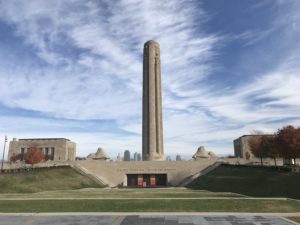 100 years ago, on the 11th day of the 11th month at the 11th hour, fighting ceased between the Allied forces and Germany. Although the Treaty of Versailles would not be signed until the end of June, Armistice Day was the official end of the fighting. Thus ended one of the bloodiest conflicts in human history. During the four years of World War I, 7 million soldiers and 10 million civilians died. The end of the fighting was observed in the United States as Armistice Day until World War II when it was replaced by All Veterans Day. Today we remember it as Veterans Day and celebrate it on the Monday closest to November 11.
100 years ago, on the 11th day of the 11th month at the 11th hour, fighting ceased between the Allied forces and Germany. Although the Treaty of Versailles would not be signed until the end of June, Armistice Day was the official end of the fighting. Thus ended one of the bloodiest conflicts in human history. During the four years of World War I, 7 million soldiers and 10 million civilians died. The end of the fighting was observed in the United States as Armistice Day until World War II when it was replaced by All Veterans Day. Today we remember it as Veterans Day and celebrate it on the Monday closest to November 11.
To commemorate this 100th anniversary, Tom and I visited the National World War I Museum and Memorial in Kansas City. We were surprised to find a National Museum in Kansas City. But Kansas Citians raised the money (2.5 million in ten days in 1919) and built a wonderful museum. They also maintained it and restored it to the point where Congress declared it the National Museum in 2004.
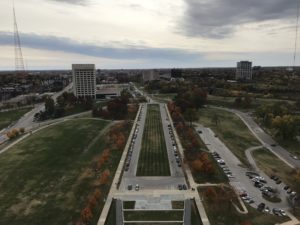
The National World War I Museum and Memorial is a large, multi-storied building on a hill above downtown Kansas City. The Museum is surrounded by a beautiful park and a lovely reflecting pool filled with metal poppies. We expected to spend a couple of hours in the Museum. Instead we were inside and on the grounds for five hours.
Because the National World War I Museum and Memorial is owned by the city, there is an entrance fee. Tom and I visited on a Wednesday, which is half-off day. So we paid for additional exhibits and for tower access. The Museum is closed on Mondays.
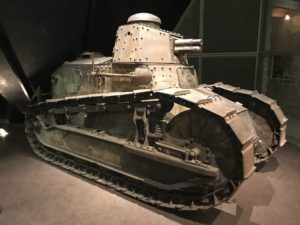 We started by crossing the Paul Sunderland Bridge, a clear floor with a metal poppy field underneath. If you have ever wondered about poppies on Veterans Day, wonder no more. The symbolism comes from the poem “In Flanders Field” by John McCrae, a Canadian soldier during World War I. He wrote it after attending the funeral of a friend who died in the Second Battle of Ypres.
We started by crossing the Paul Sunderland Bridge, a clear floor with a metal poppy field underneath. If you have ever wondered about poppies on Veterans Day, wonder no more. The symbolism comes from the poem “In Flanders Field” by John McCrae, a Canadian soldier during World War I. He wrote it after attending the funeral of a friend who died in the Second Battle of Ypres.
In Flanders fields the poppies blow between the crosses, row on row,
That mark our place; and in the sky the larks, still bravely singing, fly
Scarce heard amid the guns below.
We are the Dead. Short days ago we lived, felt dawn, saw sunset glow,
Loved and were loved, and now we lie in Flanders fields.
Take up your quarrel with the foe: to you from failing hands we throw
The torch; be yours to hold it high. If ye break faith with us who die
We shall not sleep, though poppies grow in Flanders fields.
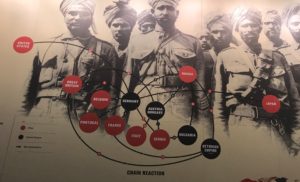
After crossing the bridge we watched a short introductory movie on the causes of World War I. Although the assassination of Archduke Ferdinand was the precipitating event of the war, nationalism and arms build-ups in Germany, France, and Great Britain laid the groundwork for a global war.
The National World War I Museum has two main exhibit halls. The first hall details the war from 1914 until 1917. The second hall details the war after the United States entered the war in 1917. We read timelines, saw artifacts, and watched two videos using maps to give more details on significant battles. Most of the war was fought along the Western Front: a trench system that stretched from the English Channel to the Swiss alps.
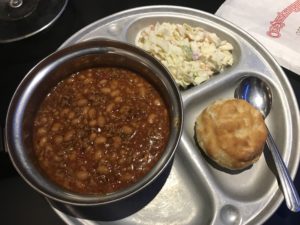
We explored these halls for a while, then headed to the Museum Café for a lunch that was surprisingly good. The menu items included sandwiches but also had several World War I inspired entrees. Tom got a sandwich but I had Army Goulash. I could have also chosen Trench Stew or Chipped Beef. Both of us thought our food was delicious.
After lunch we checked out the Museum store, then headed outside to the two upstairs halls. One had an exhibit of Australian artwork from World Wars I and II. The other hall had the Great Frieze, a section of a huge mural called “Pantheon de la Guerre,” painted by French artists to commemorate the war. The mural came to the US for the Chicago Exposition Of 1933 and then France didn’t want it back. The mural was lost and eventually found outside a warehouse in Maryland. The salvageable sections were cleaned, repaired, and installed in the National World War I Museum.
We finished our tour of the museum by going up in the Memorial Tower. From the top we got a breathtaking, although cold, 360 degree view of Kansas City. After admiring the view we came down and walked along the grounds to see a statue of a soldier from the Spanish- American War and another statue of a Pioneer Mother.
We were very impressed with the National World War I Museum and Memorial. If you spend time in Kansas City, the Museum is definitely worth a visit.


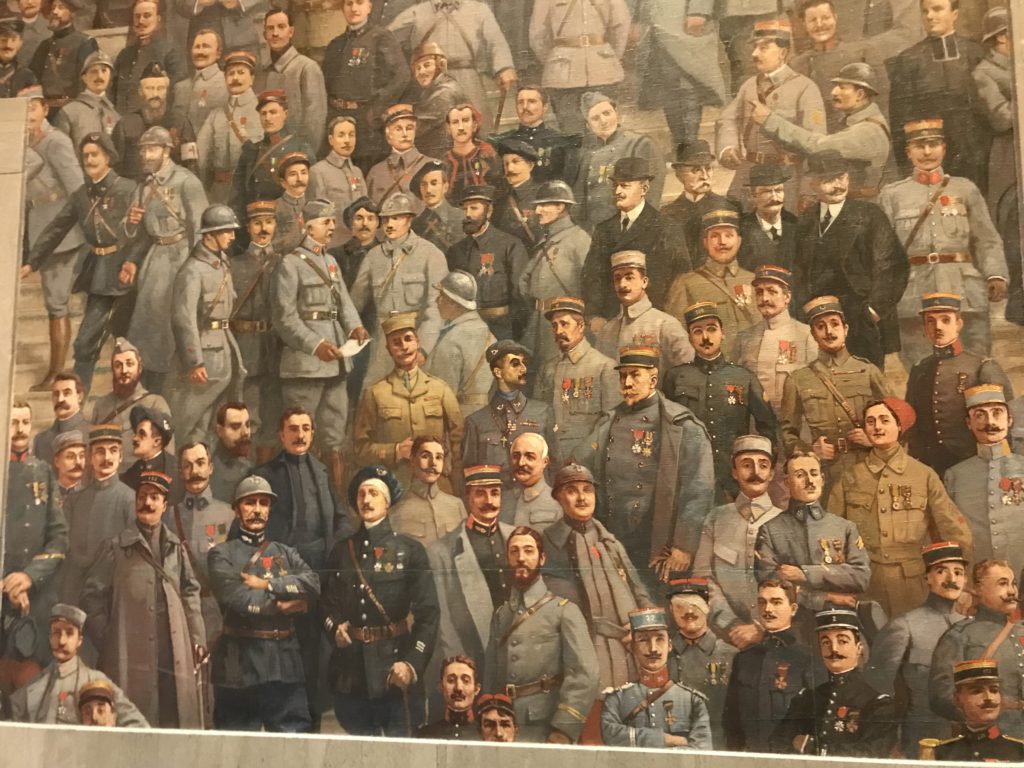
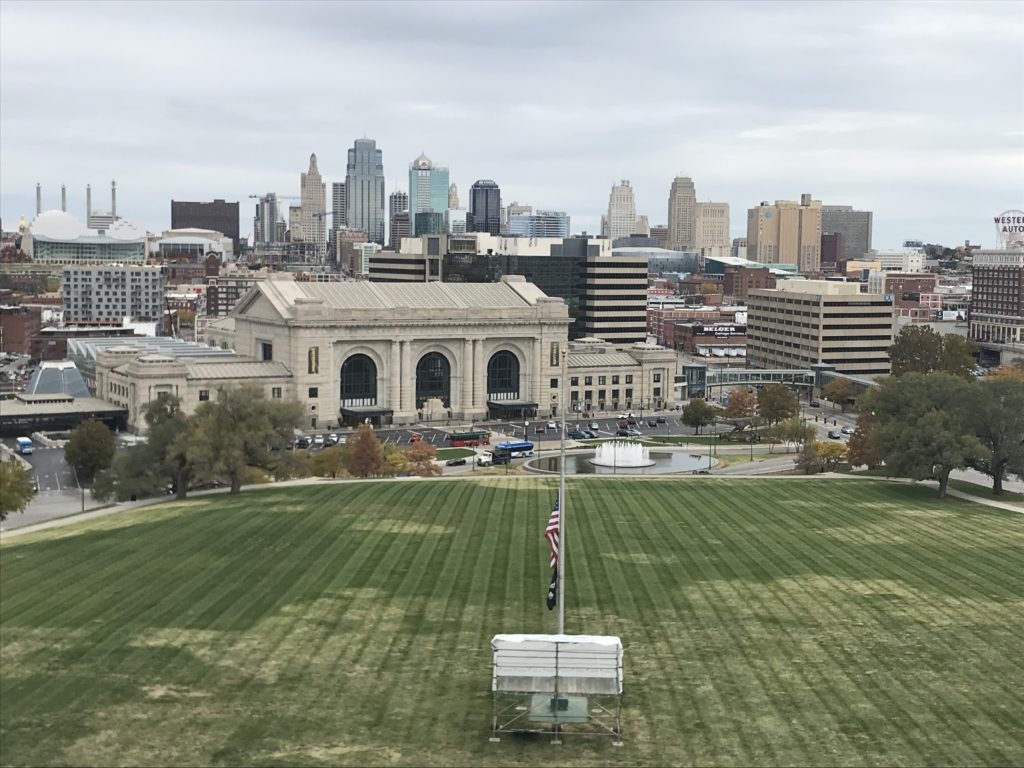
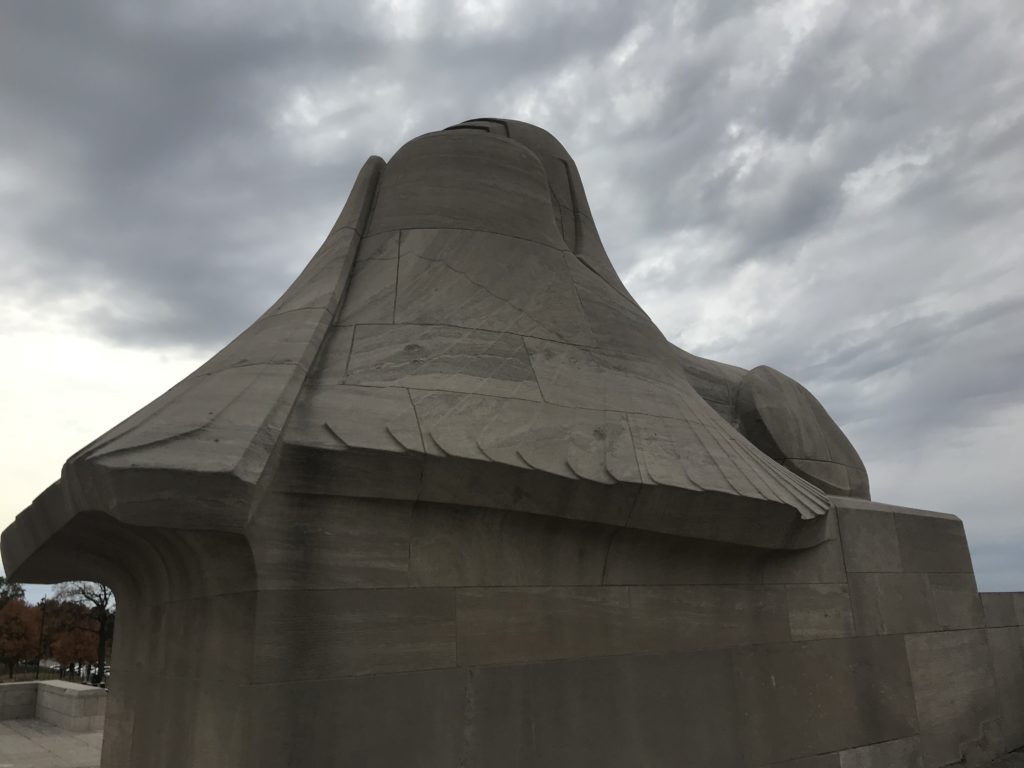
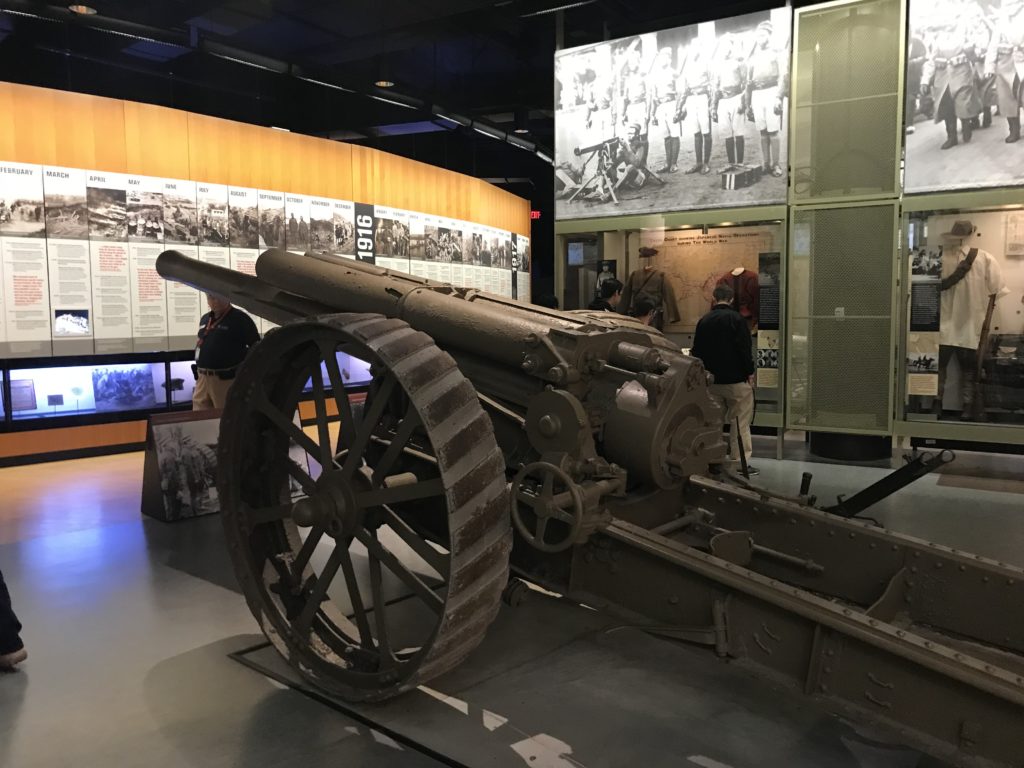
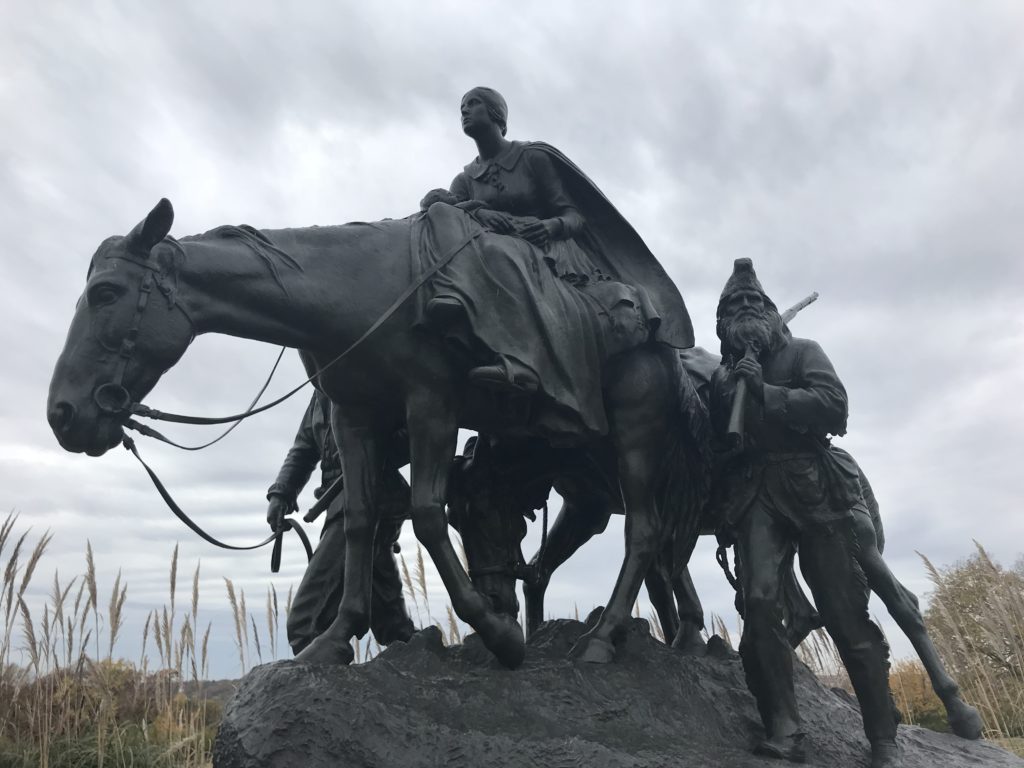
As I may go out to Lawrence to visit a dear friend next summer, plan to talk about us going to visit this museum-what a history lesson!
I hope you get to go. It was very interesting and we were glad we took the time.